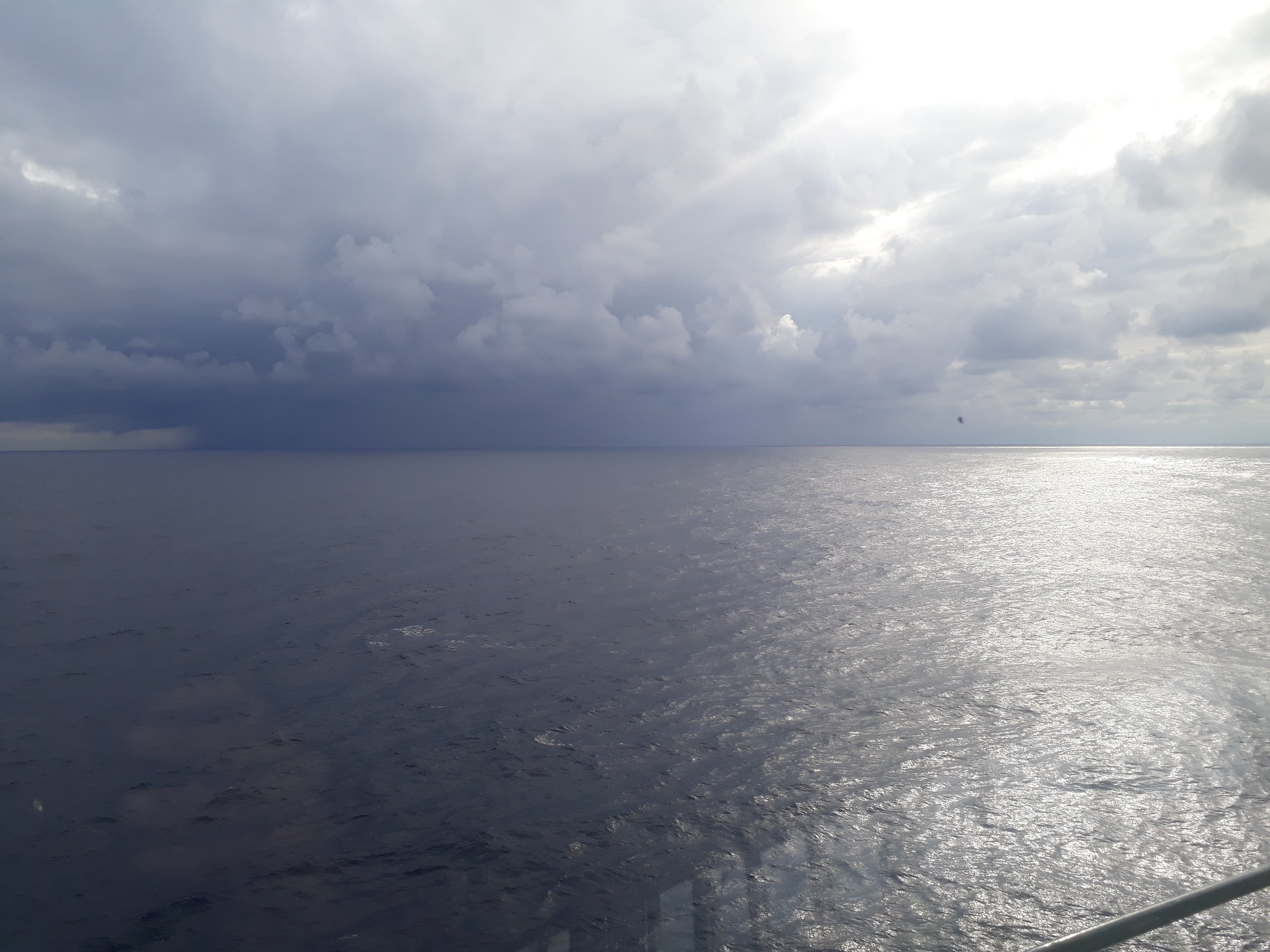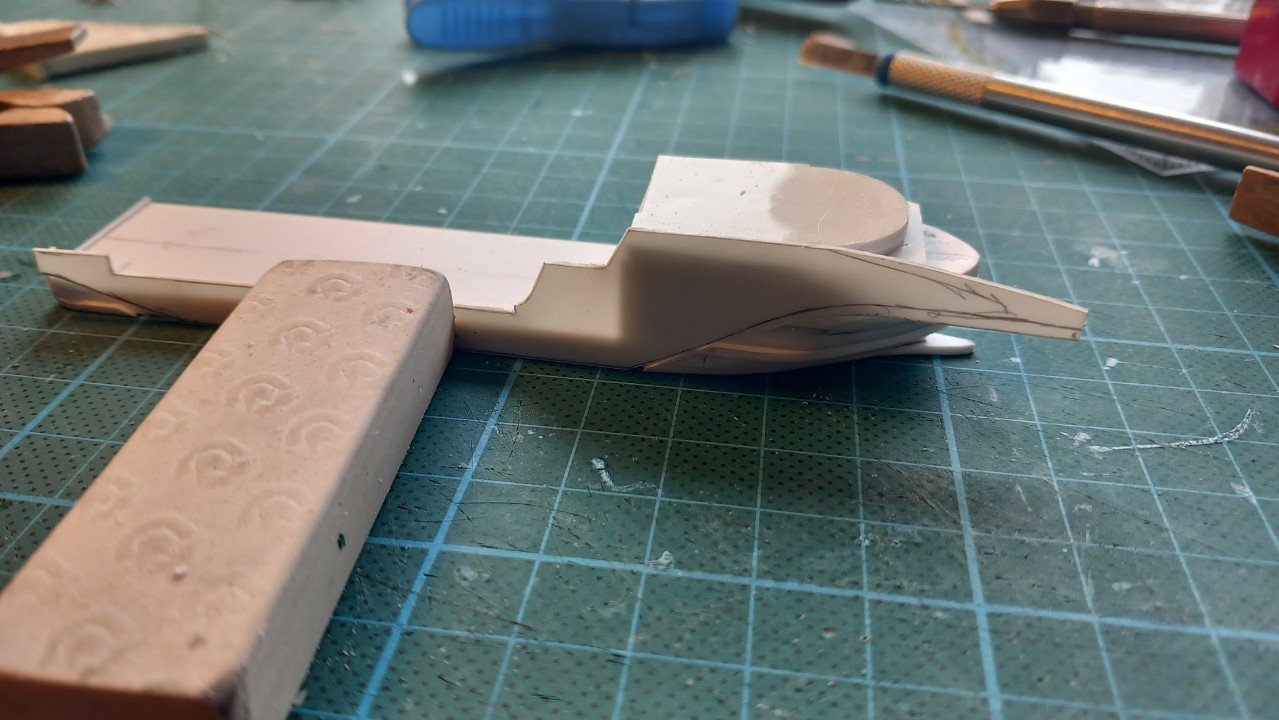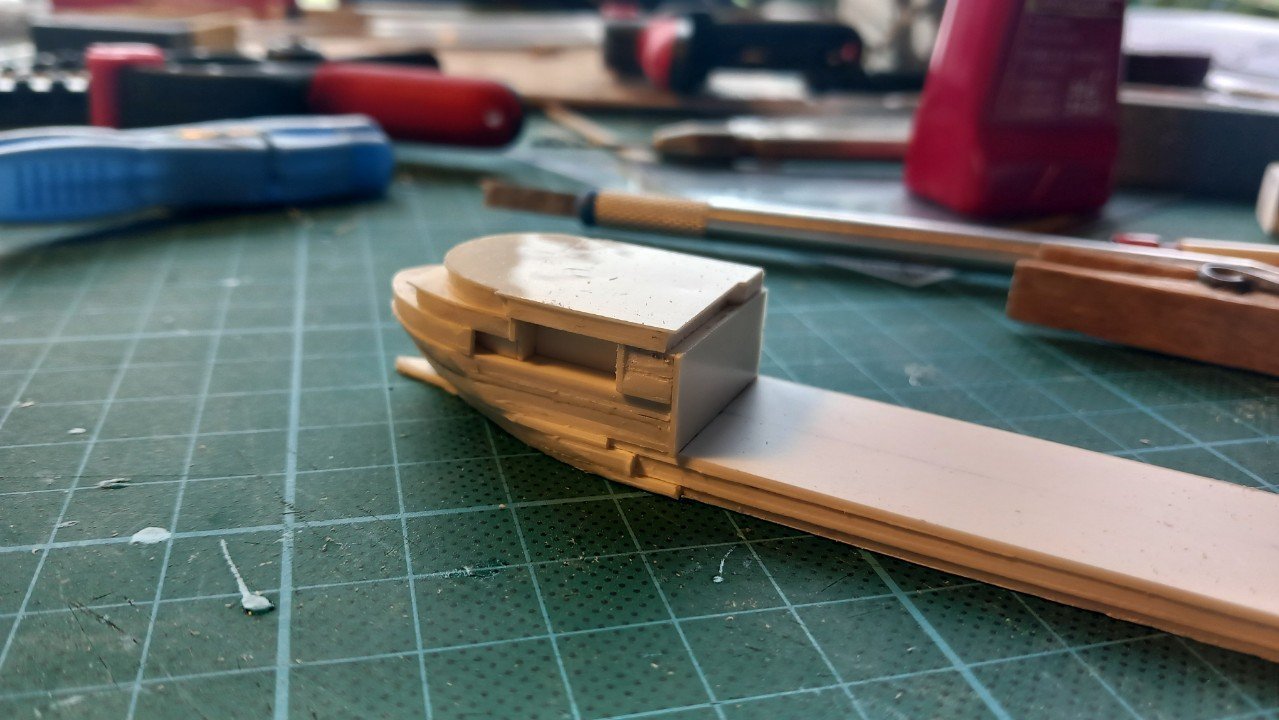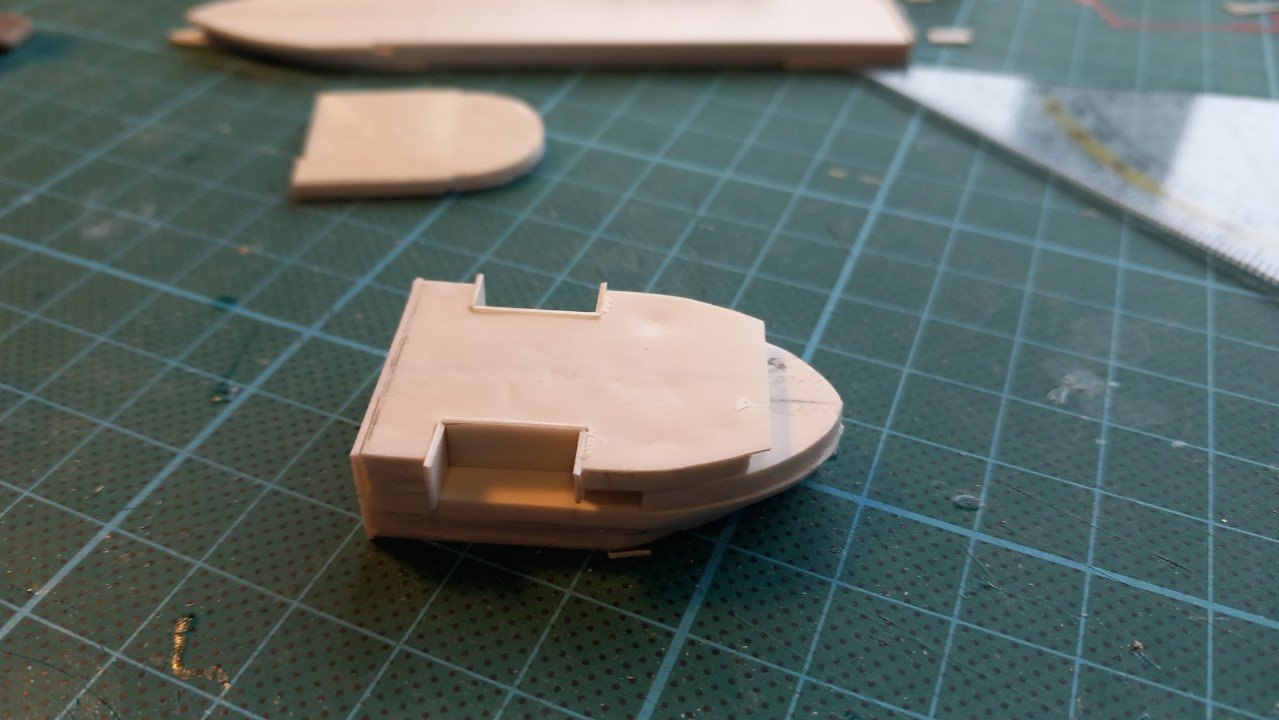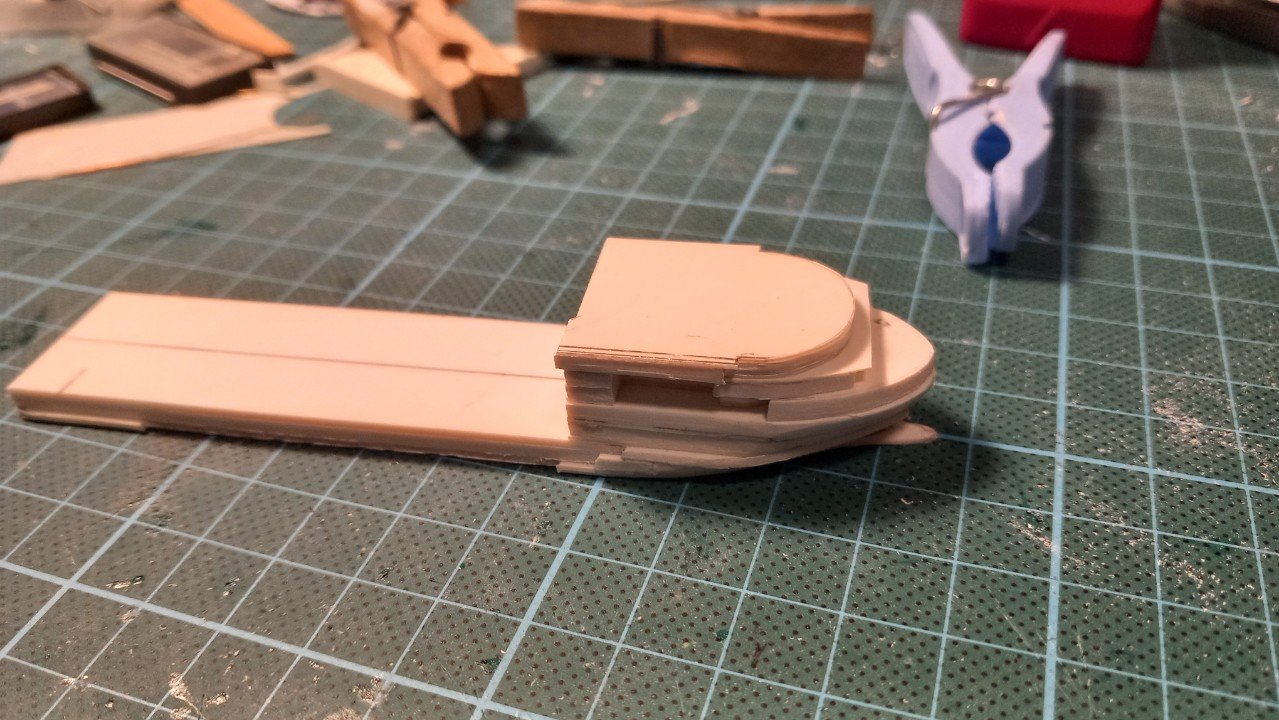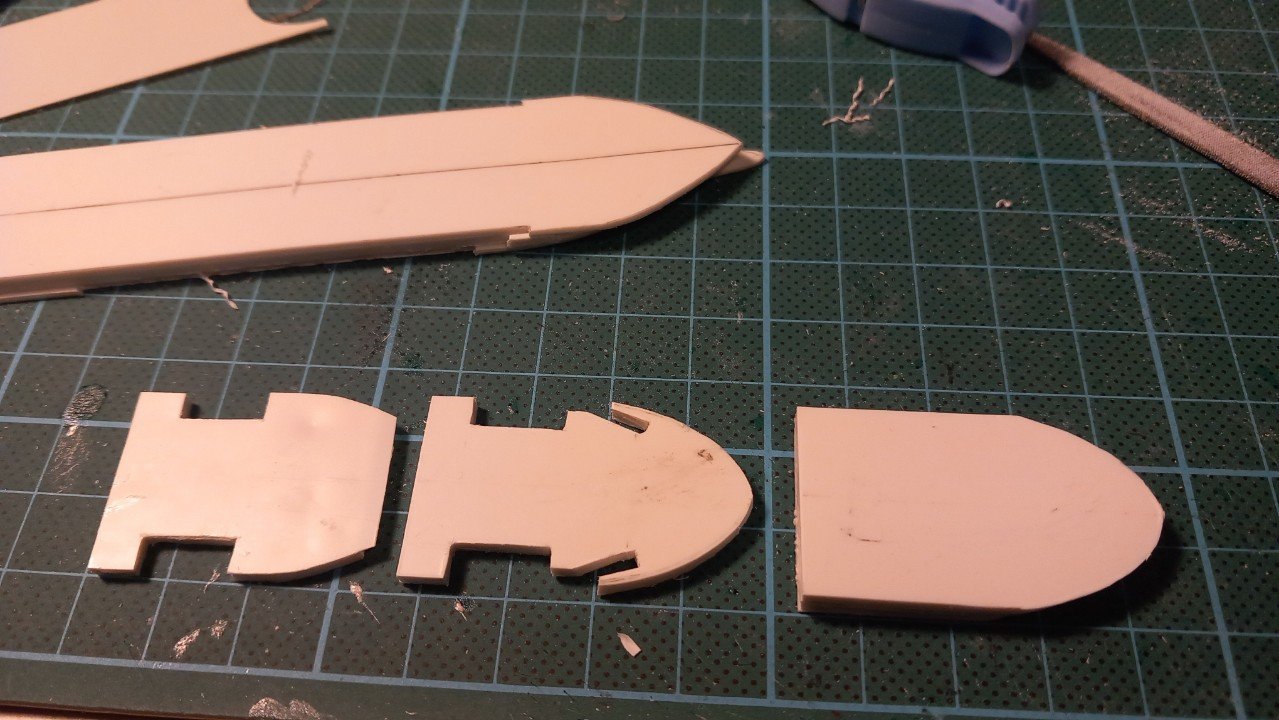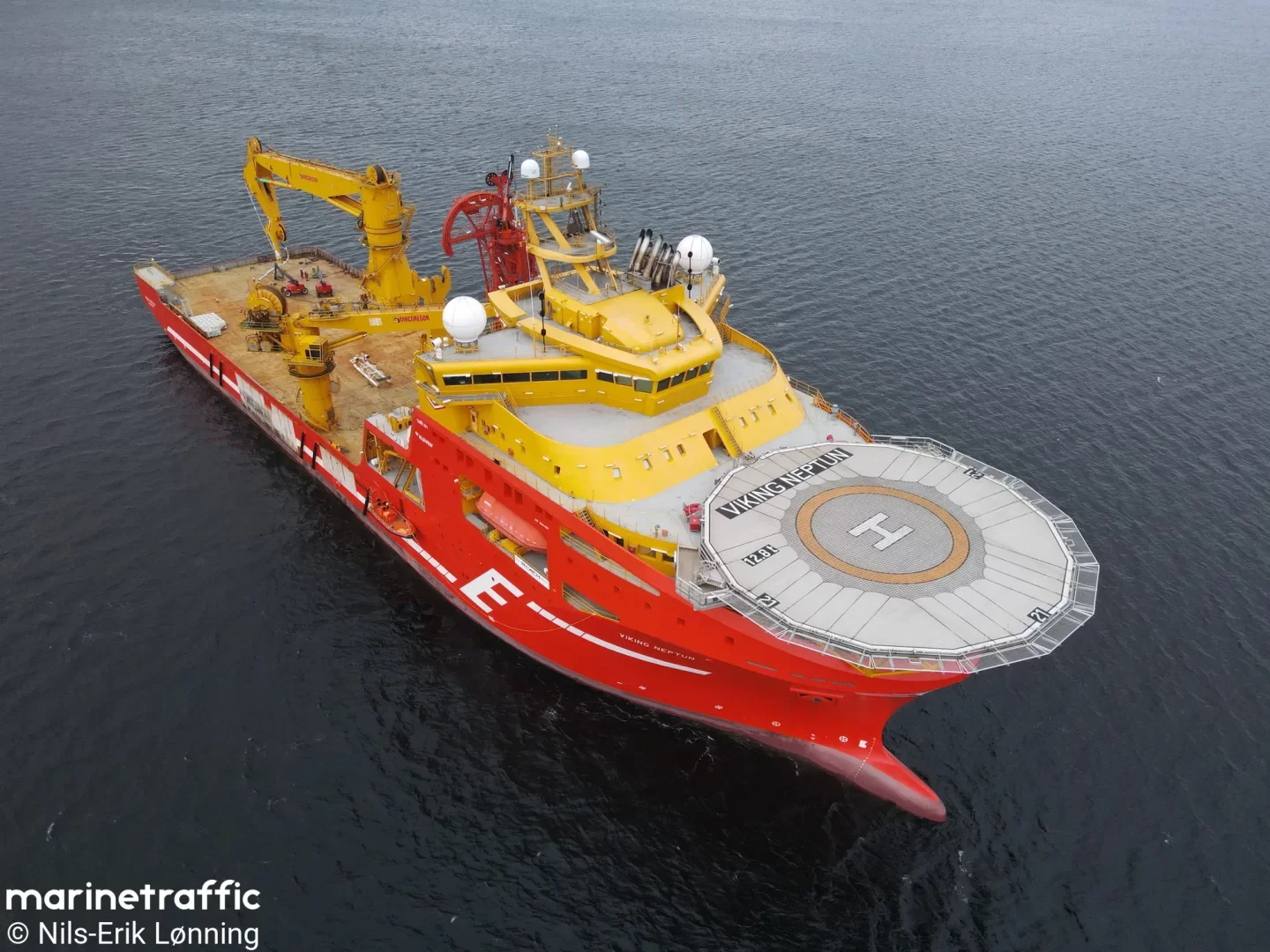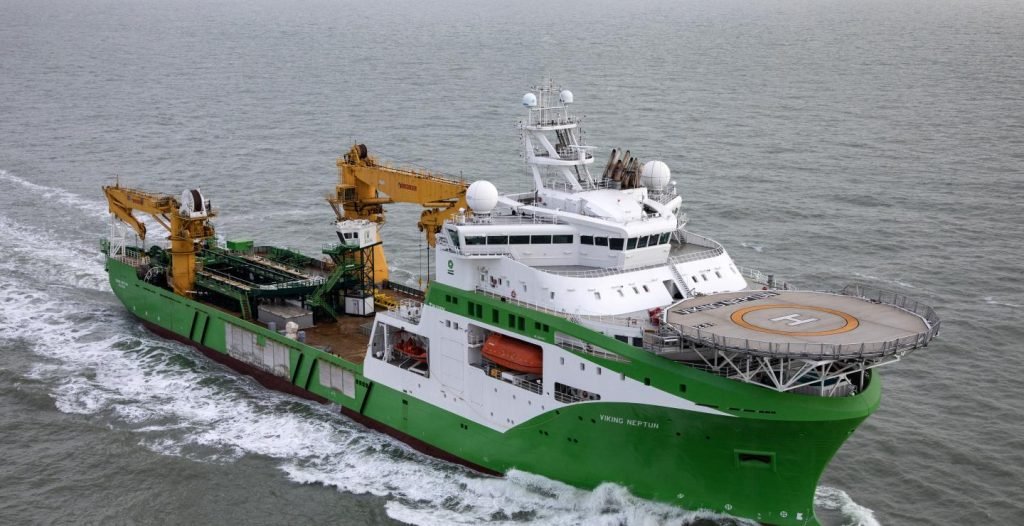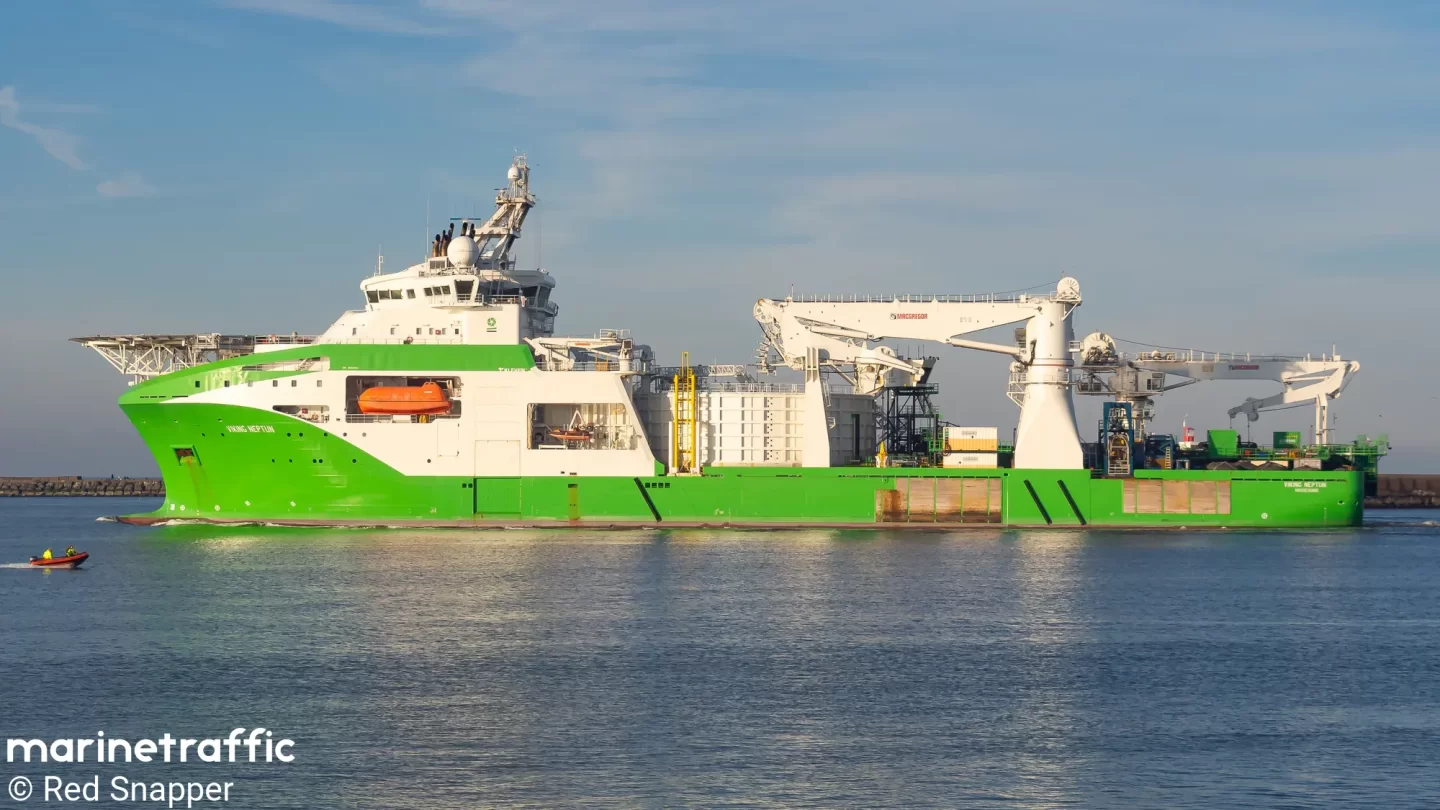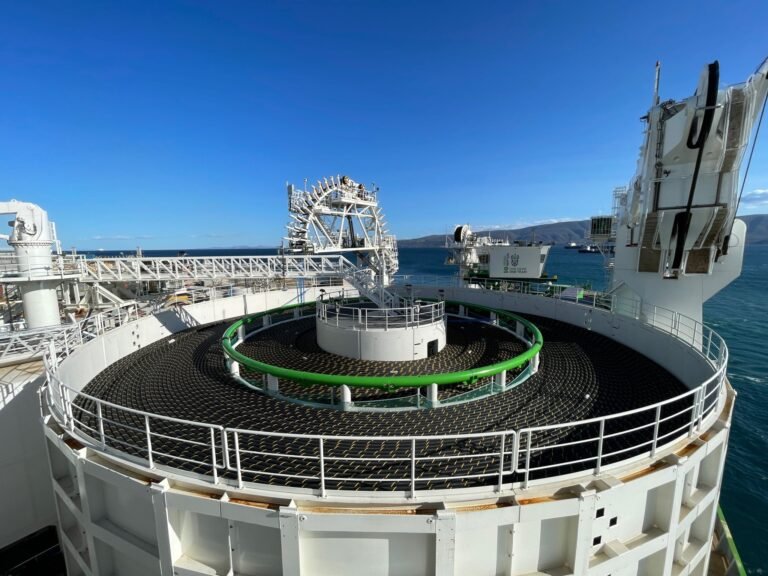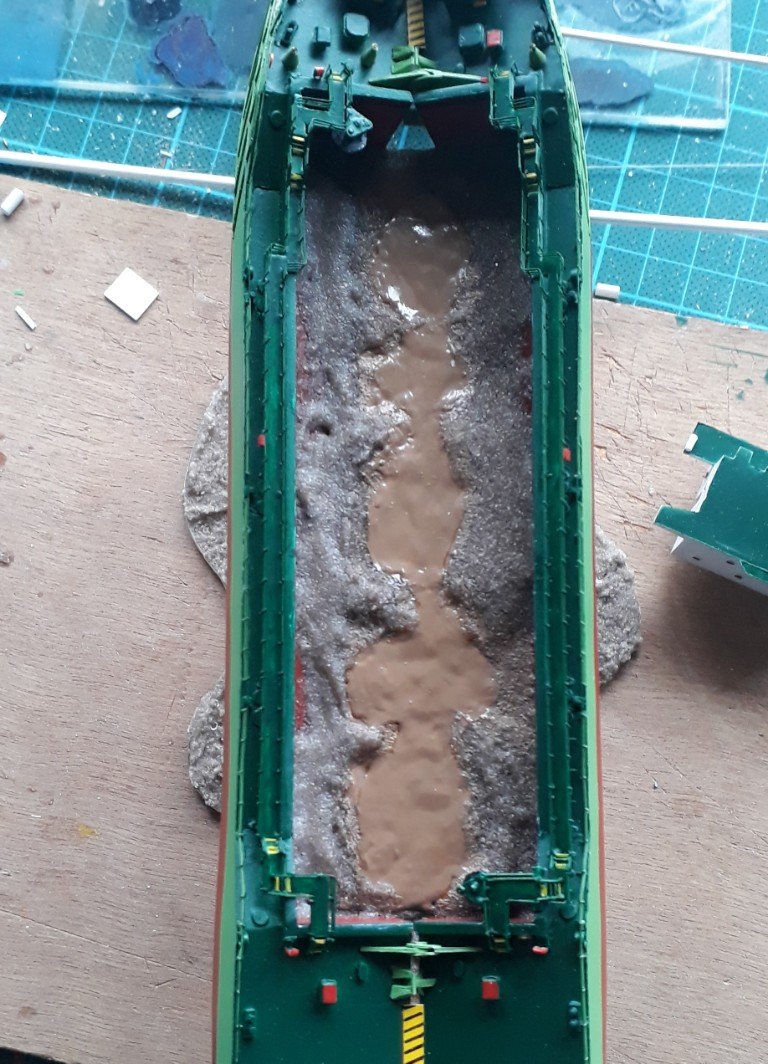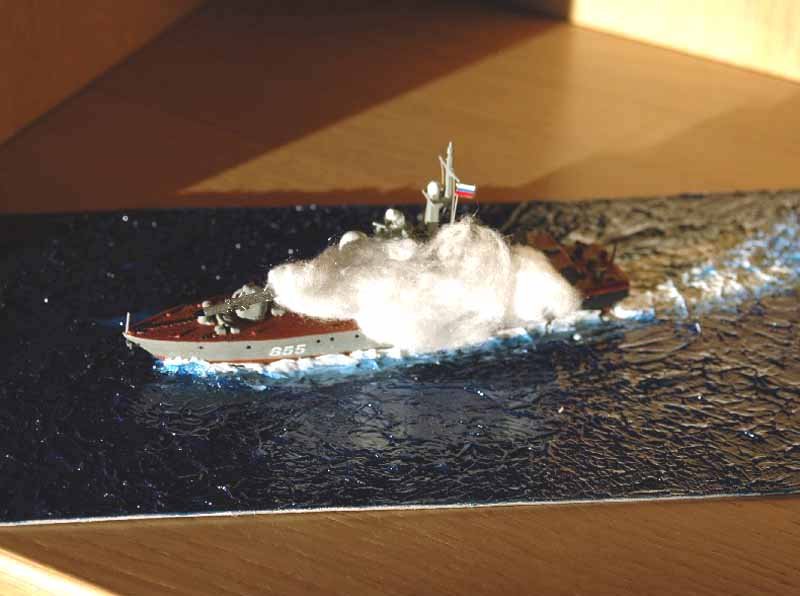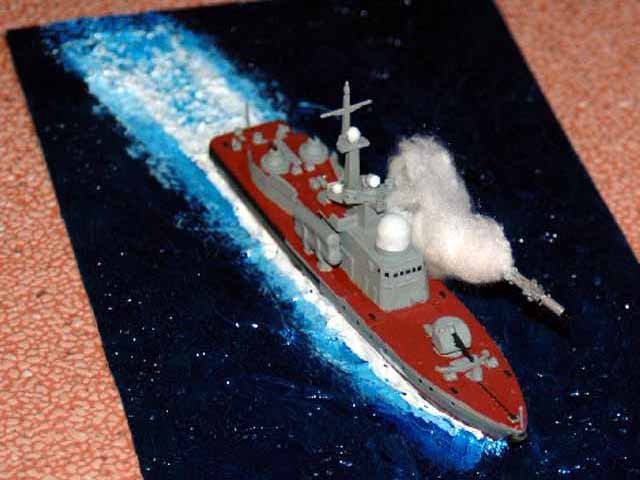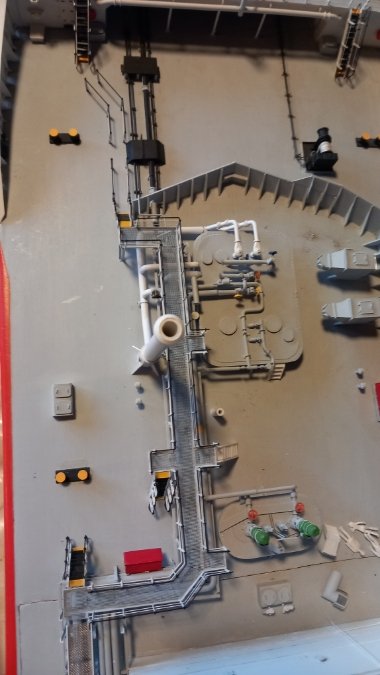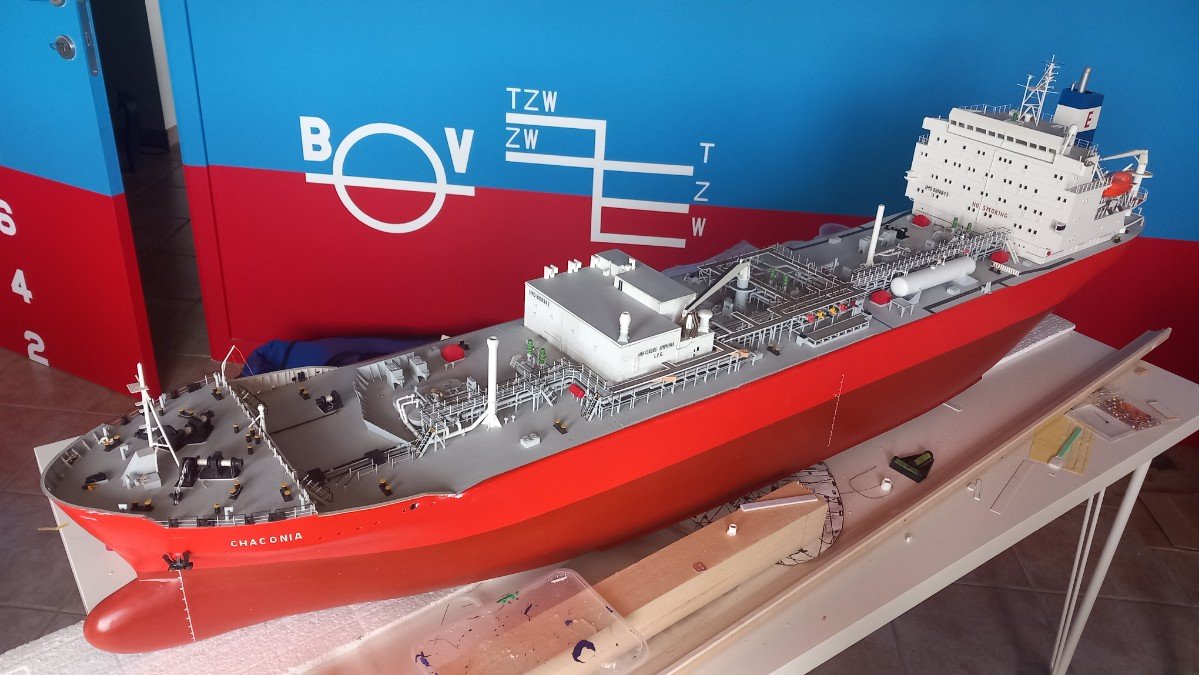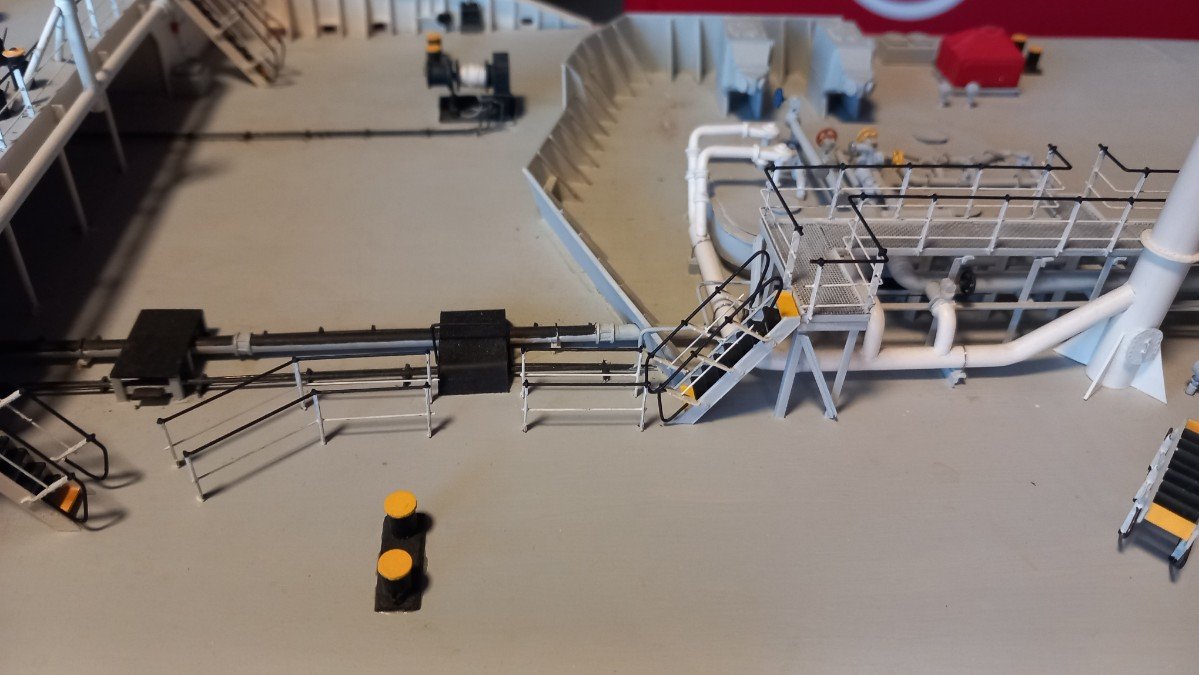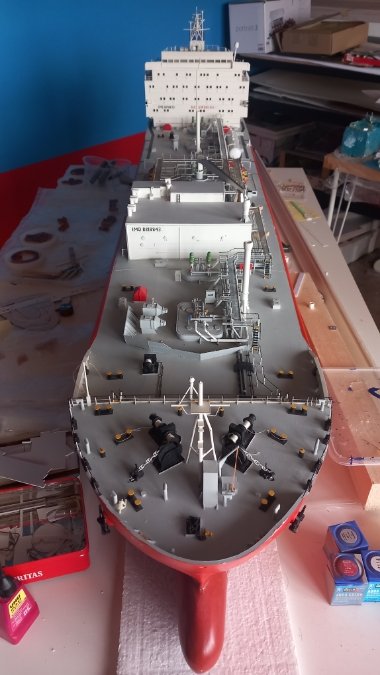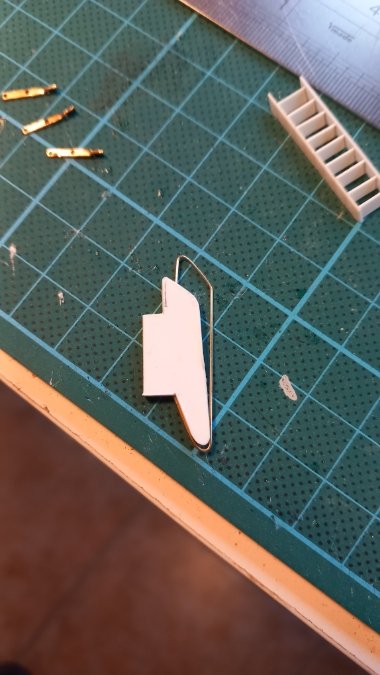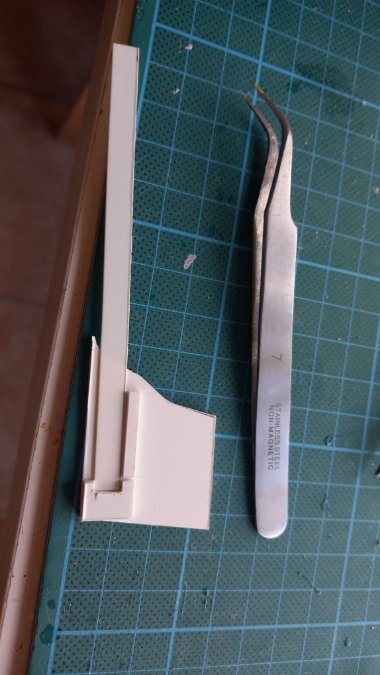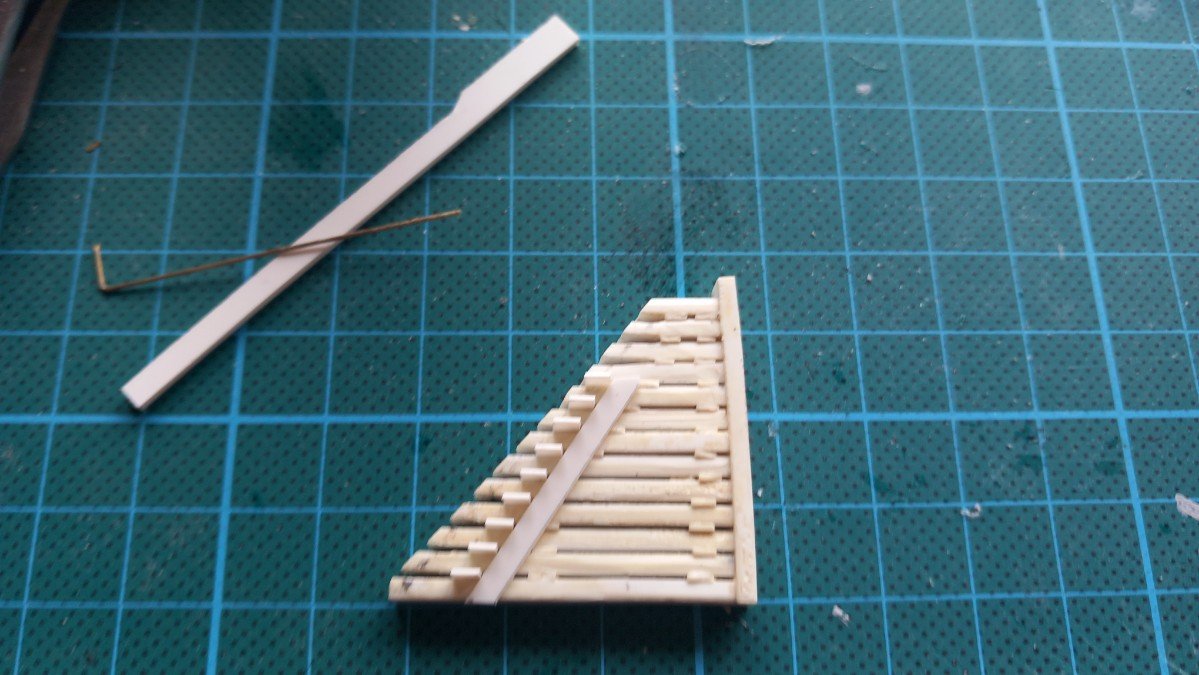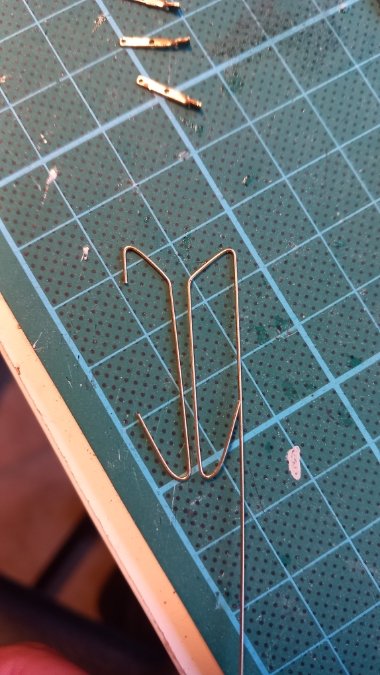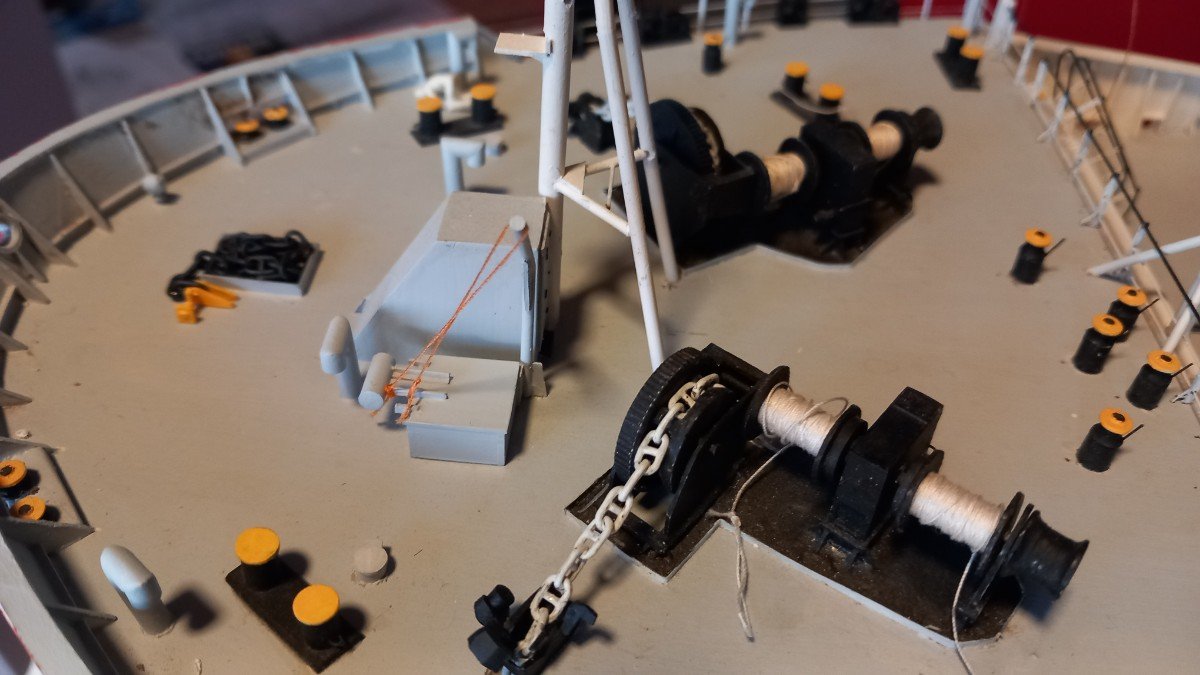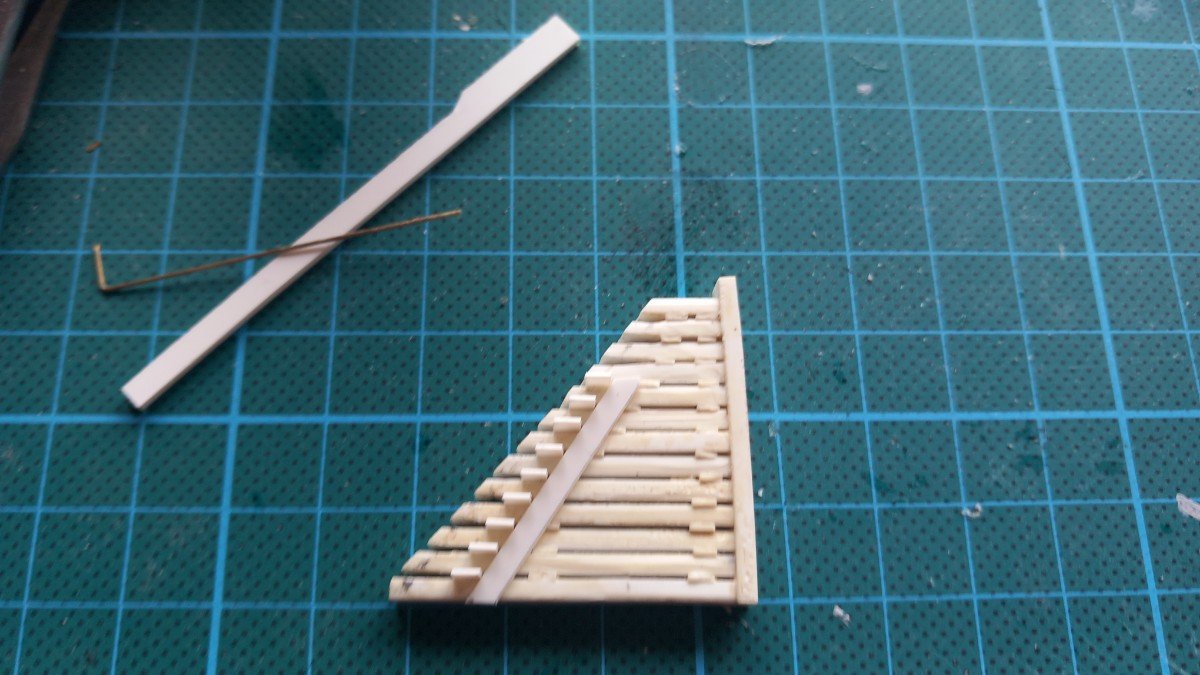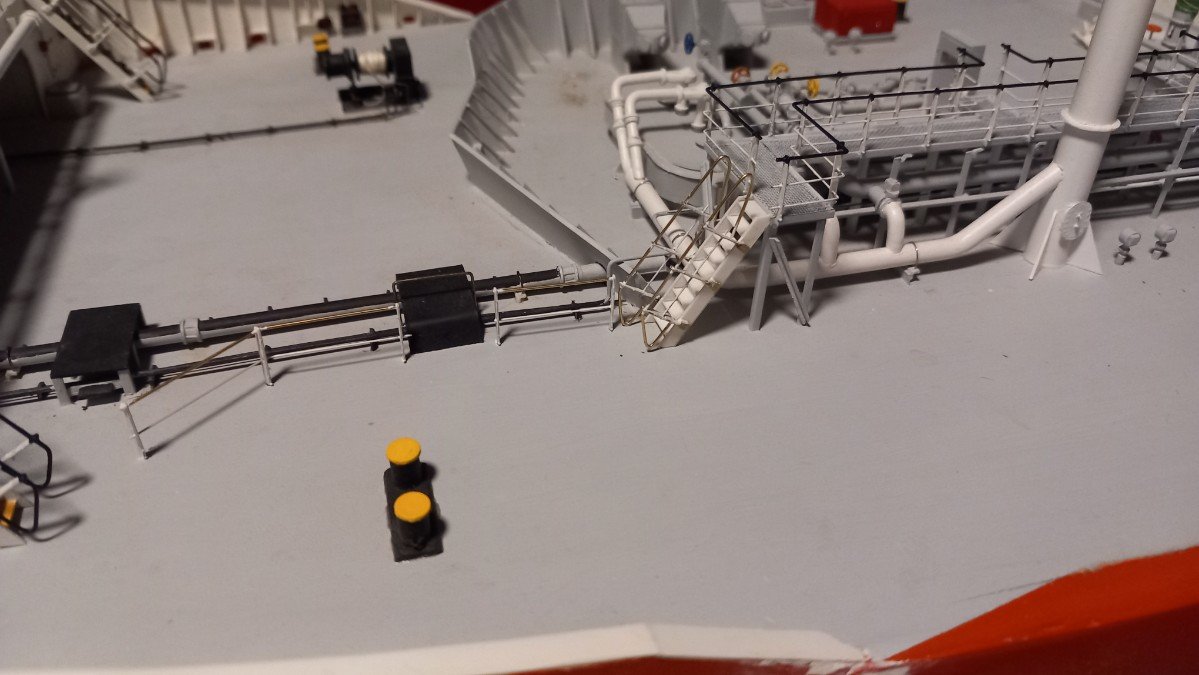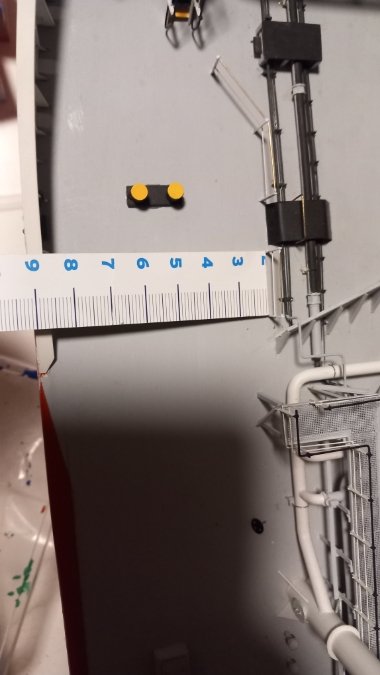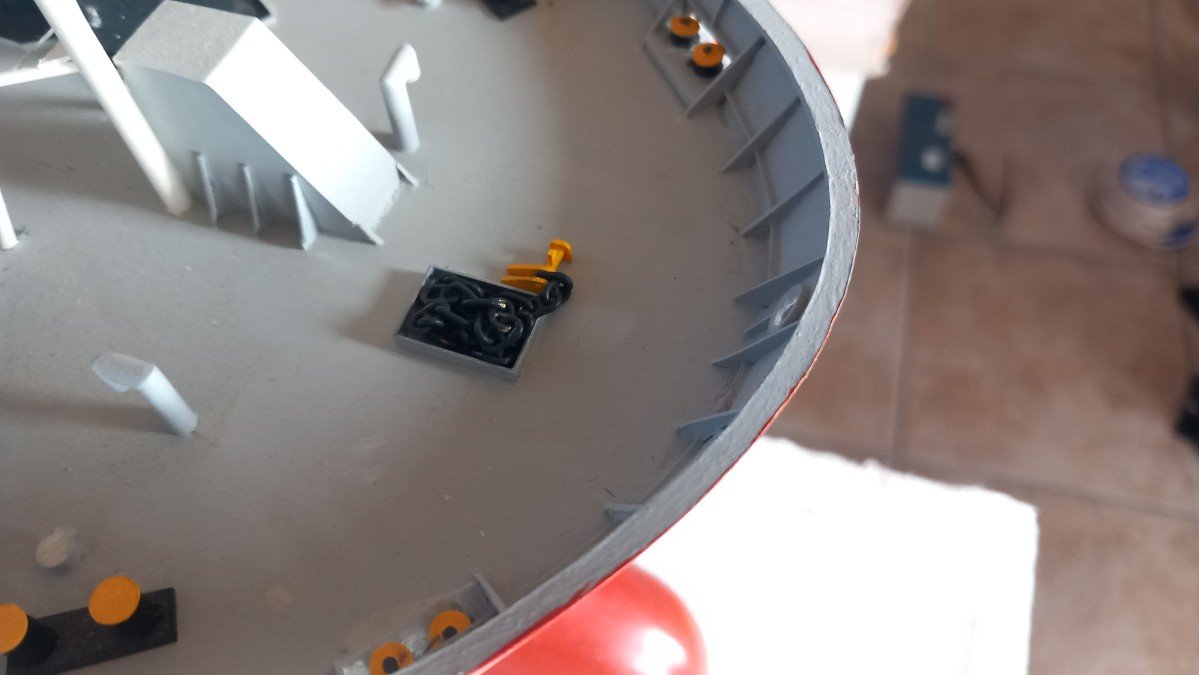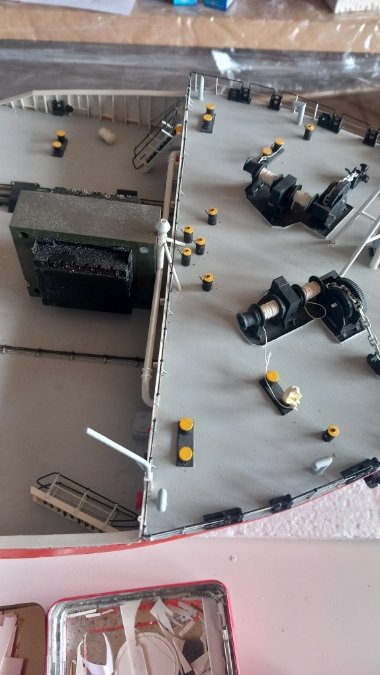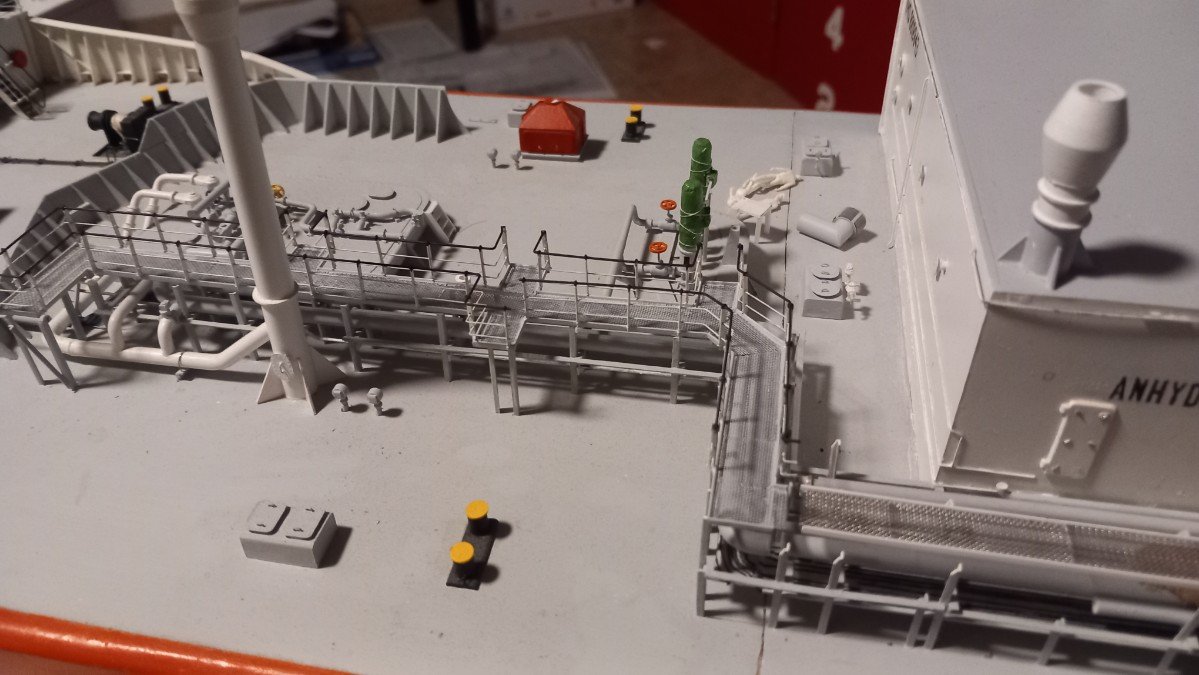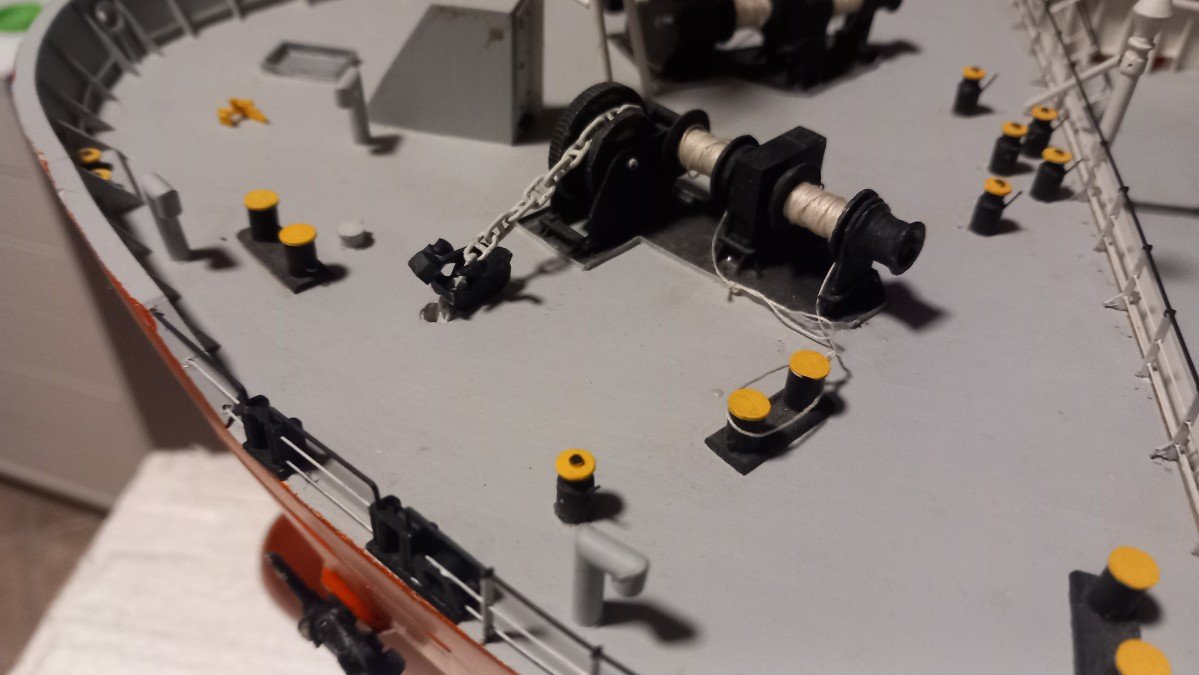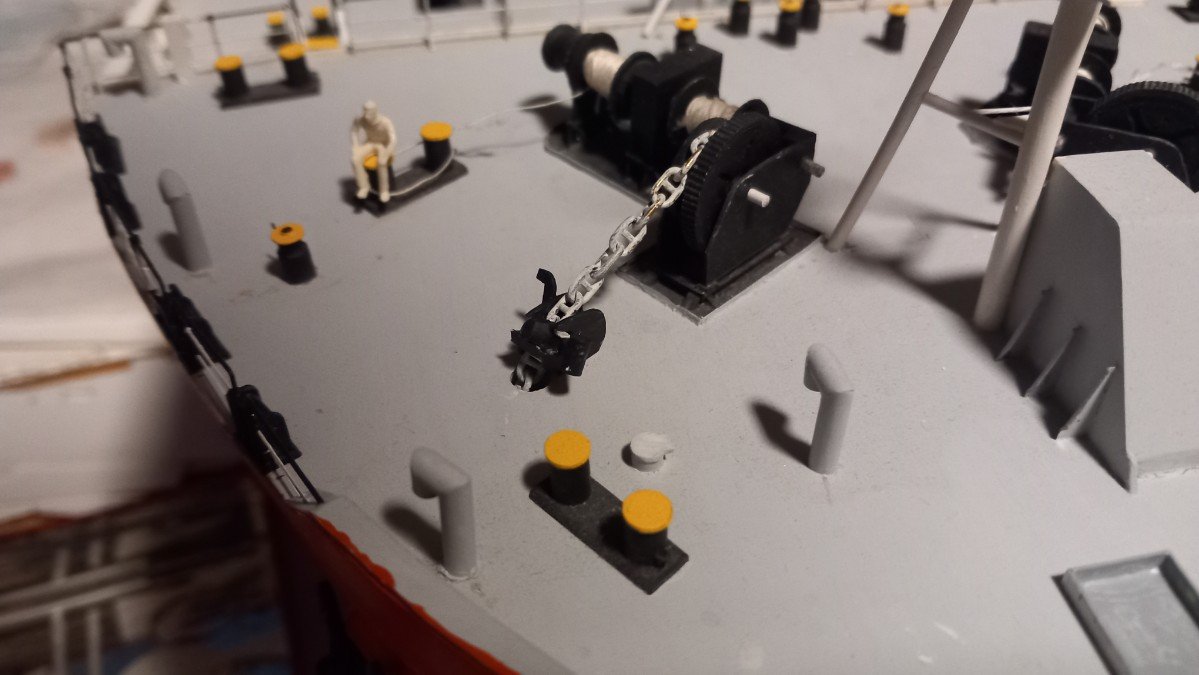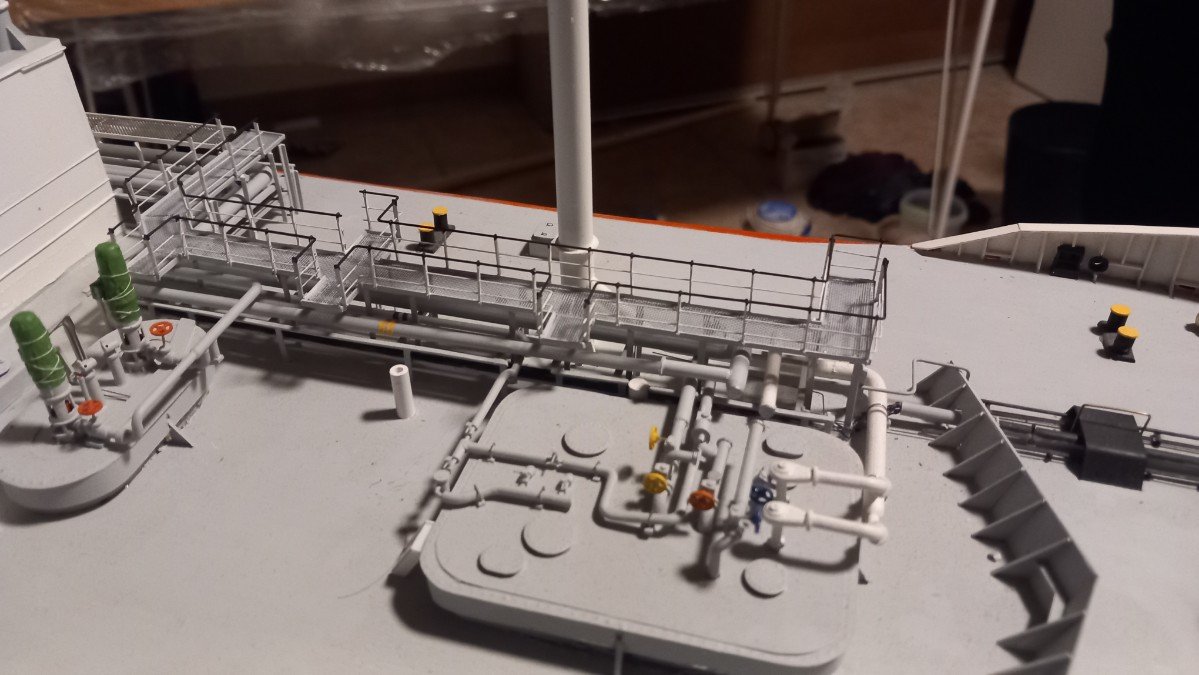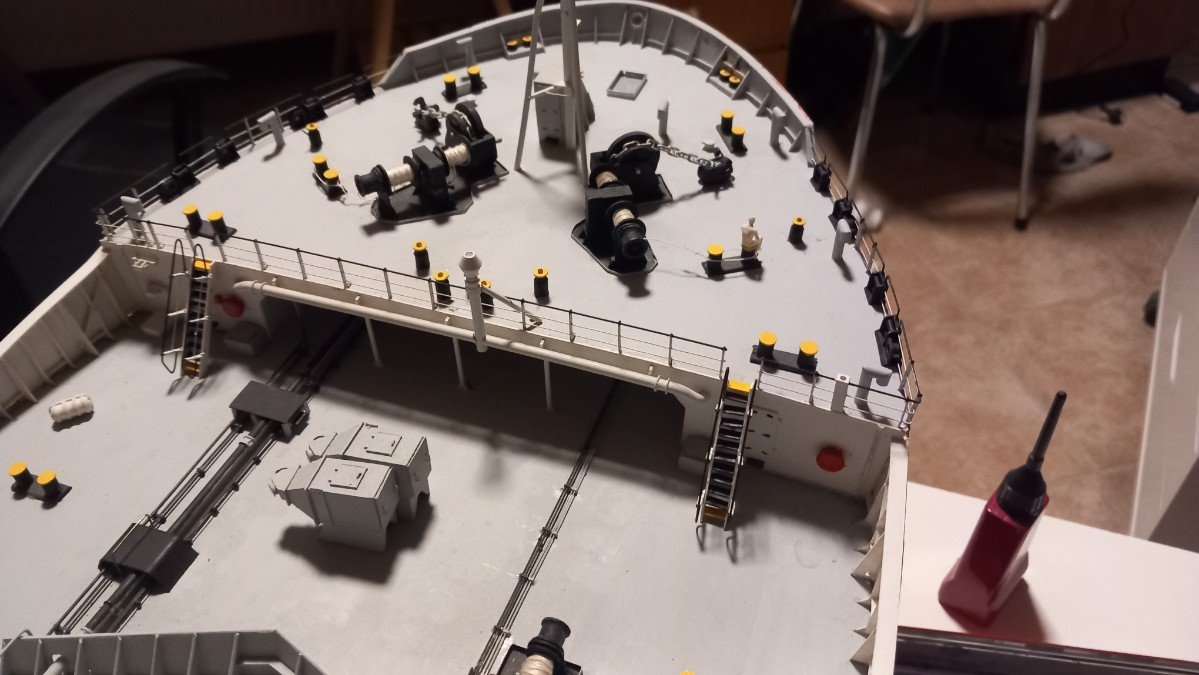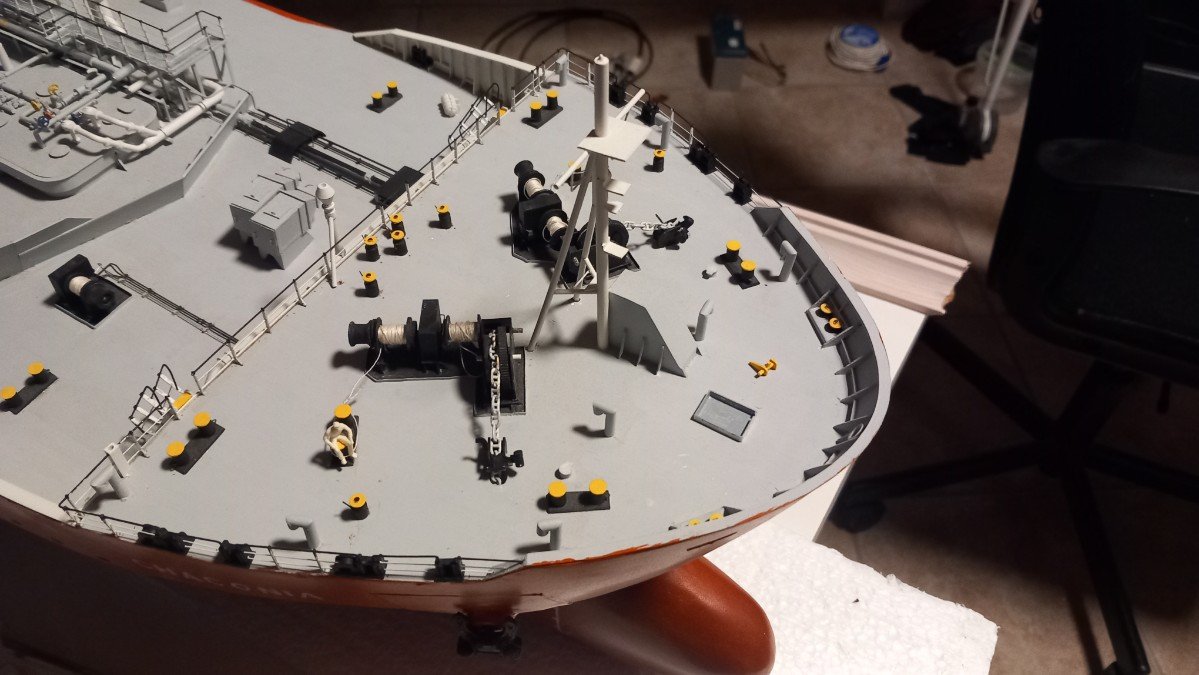-
Posts
625 -
Joined
-
Last visited
Content Type
Profiles
Forums
Gallery
Events
Everything posted by Javelin
-
Great colouring. Not sure on not putting boundaries forward and aft though. From the pictures it seems they had at least vertical beams with some regular planks to heighten the boundary. Seems some planks were missing, I believe they might have used it to guide overflow to a certain direction. That would perhaps also influence the weathering, since more material and dirt would be left behind in flow path. That is just an idea though.
- 457 replies
-
- sternwheeler
- Hard Coal Navy
-
(and 1 more)
Tagged with:
-
Welcome aboard each and everyone! Keith, you can ride that carousel, pretty sure it's slow enough for you to be safe, but still get excited. As a remark, I did not write an error in the ship's name. It really is Neptun and not Neptune. In the meanwhile I've been building. I have also started building the second vessel (named Lange Wapper), since I want to do a few actions, like applying putty, building lifeboats etc. in 1 go rather than sequential. So , construction will be a sandwich of different thicknesses. First a combination for each level, then a combination of different levels in blocks. Eventually I will wrap the whole thing in a 0.5mm outer shell, where all openings and portholes will be cut/drilled. The complexity of this build lays of course in determining where the openings will be and which part of the inner blocks will be visible through the outer hull holes. Blocks going together. For the largest openings, where the lifeboats will be located I opted for walls, to hide any seams in the stack. Those are then cut and filed flush with the surrounding surfaces. As you can see I have also mounted the aft bulkhead of the superstructure. This is only glued to the lower 2 levels. The upper levels are still dry fitted, since I need to detail those before the outer shell is placed. And a test version of the outer shell to show the concept. The sides of the stack are uneven and rough, those will of course be sanded flush before that outer shell goes on.
-
Well here we go. I got my first commission (sort of) for 2 small 1/1250 ships. Sort of, because I was planning to build those vessels in the future after all. I'm sort of lucky that the client requested a specific scale and simple waterline lay-out. Determining those is something that takes a lot of thinking and time in my case. 1 vessel is a slightly larger version (but a much older vessel) of Scheldt River, so nothing special there. So I won't make a build log for that one. The other one however is the Viking Neptun. A state-of-the-art Subsea Construction Vessel. She has (in my opinion) very sleek handsome lines, yet a strong purposeful appearance. Ya'll have to thank @Glen McGuire, for it, since he convinced me to start a build log. I believe it will be a challenge worthy of a log due its accomodation that is largely integrated into its hull/bow. It has proven to be a head ache during planning already. As is typical for these vessels, she has a Dynamic Positioning class 3 system. This means she can hold her position within certain weather boundaries with any defect. For class 3 that means that either an engine, thrusters or even electrical cabling can be disabled without her losing position. She started her life as a true SCV for the Norwegian Eidesvik company, installing manifolds in oilfields on the bottom of the sea/ocean. Additionally she is equipped with a cable carousel and an optional cable lay system for cable laying ops. She did those as well. About 1 year ago she was sold to marine dredging and infrastructure company DEME, to be used as a pure cable layer next to the DEME vessel Living Stone. She received an additional carousel on deck and a dual lane cable lay system, very much like the one from Living Stone. This cable lay system was built in smaller modules, so I assume it will be easy to remove in case subsea construction activities would be planned. For me the livery is quite difficult. I like the race-car red and yellow more than the yellow green-white livery. However, the client decided to go for the DEME version with full option, which means both the carousel and cable lay system on deck. You can put a lot of cable in there... She also still has her original carousel below deck, for a total of around 12000t of cable. That's it for now. I've started construction, so pics will follow soon.
-
It does give an impact as Wefalck mentioned. There is quite a lot of turbidity, depending on the material you are dredging. Some examples below. If you look on the right, you can see the brown cloud around the barge. Mostly from the dredging itself, but a lot of it from the water overflow of the barge as well. And the condition of that barge has a sort of similarity to the dam. The heavy material sets down, while the water evacuates by an adjustable overflow. The water however is full of lighter sediment itself, flowing back to the environment. So practically it will also pass any dam when dredging nearby that dam. (In case of Keith's barge however, the flowrates and velocities were obviously lower). In this particular case the depth at which we dredged was reduced by 1 meter on a later survey. We did some testing and the sediment remained in suspension for up to 3 days. A period in which the life in that area is obviously disturbed. Turbidity is an issue nowadays. In some cases they don't even allow an overflow and basically make a barge transport a lot of water with a small amount of dredged material back to sea on each trip. Creating a huge waste of fuel to transport water to the sea, just to avoid turbidity. Dredging will always have an influence on life on the river-/seabed, there's no avoiding it, however, I believe humanity sort of agrees it's necessary. I do not judge, but saying it won't have an influence is certainly not correct. What scale this influence has, is up for discussion as the "original situation" is questionable (before or after the coal industry, before or after the construction of the dam and so on) That said, @Keith Black, if you need more examples of a barge filled with dredge material, let me know.
- 457 replies
-
- sternwheeler
- Hard Coal Navy
-
(and 1 more)
Tagged with:
-
Roel: Do you have a build log of this barge? Kurt To my own surprise it seems not. I thought it was one of my first shared builds, but it appears I've only put her in the gallery here: https://modelshipworld.com/gallery/album/2675-split-barge-bengel-1400/
- 457 replies
-
- sternwheeler
- Hard Coal Navy
-
(and 1 more)
Tagged with:
-
Hi Keith, This is the inside of my split barge Bengel. Might give you some inspiration. The rougher side dredge material is a mixture of acrylic gel with beach sand, the glossy wet look is caused by the glossy acrylic gel. You can add more or less sand for a rougher or smoother result. The watery inside is that same acrylic gel mixed with brown acrylic paint. You could add streaks anthracite paint in it as well.
- 457 replies
-
- sternwheeler
- Hard Coal Navy
-
(and 1 more)
Tagged with:
-
Late to the party, but definately enjoying it. Great job so far. Love the shade (and the result in general) of your deck. That close-up picture really looks realistic.
- 257 replies
-
I think Keith's on to something here.... Other than that, glad you decided to put a penguin on your build, so where will you place it? 😁
- 156 replies
-
- Queen Annes Revenge
- bottle
-
(and 1 more)
Tagged with:
-
I'm using something similar too, however I don't use a pin vise. I use the directly with my fingers. Works great, most breakages is when I push them too hard into the plastic I'm drilling. I'm scared to put them into any machinery. Plastic rapidly melts and makes a mess of any drill bit when high drilling speeds are used. Don't know why you'd try dropping them from an inch high though? You have to rotate these things to make it work...
- 156 replies
-
- Queen Annes Revenge
- bottle
-
(and 1 more)
Tagged with:
-
The more I look at it, the more I'm thinking we're actually looking at 2 things, with the darker object looking like a davit/ handrail or pipe and simply a white looking object behind it... By the angle of the picture their edges seem to coincide, but perhaps they aren't just object. The forward pipe? seems glossy, it seems to have a lighter spot on the forward upper edge, which seems like a reflection... Just saying...🧐
- 457 replies
-
- sternwheeler
- Hard Coal Navy
-
(and 1 more)
Tagged with:
-
Now THAT is what I was talking about! Those pics (and explanation of bamboo) of the channel making process are gold! I assume you are using CA glue for this and not PVA? Thanks!
- 156 replies
-
- Queen Annes Revenge
- bottle
-
(and 1 more)
Tagged with:
-
Well there, I was just about to say that all great things (or mazes) have small beginnings (or pipes), and that you made a good start of one, till Kurt mentioned that brace. That's how insanity starts... Before you know it, you're adding more pipes and supports... and there you go: a maze! What I was really going to say is that those details and pipes are what makes your build so excellent and realistic. Leave those pipes off and it may become bland and in some cases toy-like (although that still wouldn't be the case for your build). 👍
- 457 replies
-
- sternwheeler
- Hard Coal Navy
-
(and 1 more)
Tagged with:
-
Hi Bill, I guess it depends largely on diameter. I also always go for full rods, not hollow tubes, since those will flatten in the bend. Full rods prevent bending. Second thing is radius of the turn in relation to rod diameter. I don't heat anything, since that indeed often goes wrong. In general I use drill bits to bend around and for small diameter rod, I do still use larger diameter bits. For example, a 1.5mm rod, I'd use a 4mm drill bit. This radius avoids extreme build up of matrial on one side and excessive stretch (and breakage) on the other side. I also always bend (for 90° bends) in several phases. I'll bend it first 50 or 60° and leave it for a few seconds (to settle, as the styrene is plastically deforming). I'll then continue further. It's a bit of feeling, how far you can go in that first bend. After that I'd typically bend it beyond 90°, perhaps up to 110° or so. It will return (remaining elastic deformation) to eventually settle around 90°. Once it has flowed this far, it is also easy to bend a bit back if that's required. Larger diameters are harder. For 3mm, I have a tube bender, but in Chaconia I also use white insulated electrical wire, where I use the copper core to insert into styrene tubing. I do this if large tubing has a lot of bends, where the lengths in between need to be accurate. In large rods bending such shapes with accurate distances in between is nearly impossible. I hope this is of any help. I believe there are a few pictures of the electrical wire trick in this topic, not sure about the tube bender...
-
That's a great job on that piping Keith. At such short distances, bending is indeed difficult. From time to time I use a piece of styrene with a hole of the same diameter as the wire near its edge instead of pliers. I then put the wire through the hole and bend by twisting the styrene piece or bend the wire while holding the styrene piece, depending on what I need. If the distance between bends is too small, you can still cut the styrene to remove the wire. It takes some practice, but once you get the hang of it... In any case, astonishing results so far. As to protections etc. they may have used portable fenders made of pieces of wood, hung overboard with a rope or even fenders made of old mooring ropes. Even today these methods are used on small workboats, apart from of course more professionally made inflated fenders or car/truck tyres.
- 457 replies
-
- sternwheeler
- Hard Coal Navy
-
(and 1 more)
Tagged with:
-
That fork piece is a brilliant idea. Never thought about that! Please do make a lot of pictures of the build process,as I'm likely to check this log (and all your other logs) in detail for my next SIB.
- 156 replies
-
- Queen Annes Revenge
- bottle
-
(and 1 more)
Tagged with:
-
Found some old pictures of my cotton wool thing. I did use larger pads of cotton wool, they were less dense. This was of course a smoke effect, I guess you will need to play a lot with the colouring to make it look like dense fire. Love the colours you've already applied, very strong pigment, and that's what you'll need I guess.
- 156 replies
-
- Queen Annes Revenge
- bottle
-
(and 1 more)
Tagged with:
-
Thanks Paul, I must admit these overviews force me to take pictures from bigger distances due to her large size. A lot of her imperfections are therefore not visible on these pictures. I'd even go as far as saying I'm probably one of worst builders in this scratchbuilding part of this forum. I never quite succeed in getting things straight, always use too much glue and painting is mediocre at best. I have improved over the years, but I can not undo what I did 14 or more years ago. On her portside bow and foremast you also see damage from a collision with a bridge. Paint missing, mast severely damaged. I decided to treat that repair as a seperate project and first finish the ship. I wanted to mention that because for once it wasn't a construction or painting error by me. 😄 (it was a manoeuvring error by me though 😆) One advice for anybody building a ship this size is use of a movable table or at least a set-up that allows you to move around the model. You can't see it in the last picture, but the table feet are from Ikea and end in swiveling wheels (with brake). This allows me to turn and shift the model anyway I want and allows me to bring certain parts of the vessel closer to better lighting or powertools when required.
-
Incredible piece of work Keith. That dollar bill is really showing how brilliant this build is. Not only the building, but also the painting of such tiny pieces with such a sense of realism is simply outstanding!
- 457 replies
-
- sternwheeler
- Hard Coal Navy
-
(and 1 more)
Tagged with:
-
Thanks, happy to hear someone might have a use for my posts. The jig was built 10+ years ago, I guess I was clever back then. The jig for the railing is however the 2nd version. The first one ended up being cut up and used in pieces in another build. I didn't really think of continuing this build I guess. In any case, the forward PS part of the ship is also finished. The ladders aren't glued though. In this top view you can see the railing on main deck that connects the catwalk stair with the stair to the foc'sle. I did have some time remaining, so I also built the 2 small stairs and 1 long one on the SB side of the catwalk (without railing or paint for now). And an overview:
-
Late to the party as ever. I've contemplated drilling holes in bottles for past projects, but always considered it cheating, just short of heresy. That said, and for the great purpose you have in mind, I fully approve of this hole and I'm glad you tested this because I was certainly curious whether it could be done without wasting a bottle. I love this project. Perhaps you could use cotton wool (perhaps coloured) around the leds to simulate fire? Should not be too difficult to get into the bottle as well. I have a cotton wool smoke trail of a missile that hasn't lost its shape in nearly 20 years and I didn't treat the wool with anything. Not really sure how it will spread or "contain" the light though...
- 156 replies
-
- Queen Annes Revenge
- bottle
-
(and 1 more)
Tagged with:
-
First I finished that forecastle by adding the bosun store hatch and associated davit. For the davit handling rope I used normal orange sewing thread to replicate the commonly used orange polypropyle rope. The experience of actually finishing an area was quite addictive, so I decided to move just aft of the forecastle and finish that area first. Truly finishing it, also means creating the stairs, a task I'm not looking forward to. There is really a huge amount of stairs on this vessel and all are different. I was planning to leave them for last, but I believe this may have resulted in me not making them at all or ending up with a builder's block. So now on to the forward part of the deck, where I just installed the catwalk. First stair steps. I made a new jig for the steps. I already produced a lot of steps for the future as well. Then they go in the jig. And once we have a stair, I produce the handrails, also with a jig. This jig has both sides of the rails, but the length is not fixed. So I make the sharp end (upper)first, the check the required length with the stair. Then I mark it and form the blunt (lower) end of the rail. There are 4 long and 2 short stairs on the part in front of the deck house. Here is the forward most stair. You can also see part of the railing on deck level that goes from that stair to the forecastle stair. This is another part of the "safe acces to tanker bows" as required by regulations. And here is one of my secret weapons: I use a lot of these free paper measuring tapes from Ikea and other shops. Their flexibility comes in handy, from time to time I also cut them in smaller pieces for easier use.
-
She definately looks good. And what a pace of construction, from January start till finishing now! It takes some sacrifices to a model's quality to make it RC if you're not willing to continuously repair it. However on your model there are few visible compromises! What I don't like too much about such ships is the single prop/rudder configuration that limits the amount of manoeuvering one can do and increases the minimum required pond size to comfortably sail around.
- 51 replies
-
- Puncher
- escort carrier
-
(and 1 more)
Tagged with:
-
I'm really short of time nowadays, so not much progress. Also wanted to add pics of the real ship, but having some hardware issues, so I'll just show some progress pics. Started by painting (and currently mounting) the forward catwalk. During the painting process I decided to finally continue that forecastle. First was the Chafing Chain. It's part of the obligatory Emergency Towing System of tankers. Small tankers only have one forward, larger ones also have a system aft. The forward system consists of a Smit Bracket (yellow thing in the pictures), with a chain connected. In an emergency, the chain is led overboard through the Panama fairlead by either the tanker's winches or the assisting tug's winch and then connected to the tug for emergency towing. Due to a chain's strength it survives the chafing of towing in heavy swell etc. Steel wires aren't so good for that and wires deteriorate much faster than chains. The heavy chain was connected to the bracket and stowed in a small coaming. On most ships it's also covered with canvas, but invariably it ends up as a pile of rust... I also still had the chain stoppers to do. They transfer the forces of the anchor and chain to the vessel structure rather than keeping it on the winch brake and/or gearbox. I've seen about as many versions as I've seen windlasses, so no real standard there. Generally it's a big block that's hinged between two shackles of the anchor chain with a counterweight to aid in removing it when the anchor is hoisted again. Once it's in place, the chain is lowered so that the next shackle rests on the stopper block (transfer of forces, windlass loses tension). I also finished the stairs to the forecastle, first stairs to be finished in over 5 years!
About us
Modelshipworld - Advancing Ship Modeling through Research
SSL Secured
Your security is important for us so this Website is SSL-Secured
NRG Mailing Address
Nautical Research Guild
237 South Lincoln Street
Westmont IL, 60559-1917
Model Ship World ® and the MSW logo are Registered Trademarks, and belong to the Nautical Research Guild (United States Patent and Trademark Office: No. 6,929,264 & No. 6,929,274, registered Dec. 20, 2022)
Helpful Links
About the NRG
If you enjoy building ship models that are historically accurate as well as beautiful, then The Nautical Research Guild (NRG) is just right for you.
The Guild is a non-profit educational organization whose mission is to “Advance Ship Modeling Through Research”. We provide support to our members in their efforts to raise the quality of their model ships.
The Nautical Research Guild has published our world-renowned quarterly magazine, The Nautical Research Journal, since 1955. The pages of the Journal are full of articles by accomplished ship modelers who show you how they create those exquisite details on their models, and by maritime historians who show you the correct details to build. The Journal is available in both print and digital editions. Go to the NRG web site (www.thenrg.org) to download a complimentary digital copy of the Journal. The NRG also publishes plan sets, books and compilations of back issues of the Journal and the former Ships in Scale and Model Ship Builder magazines.

